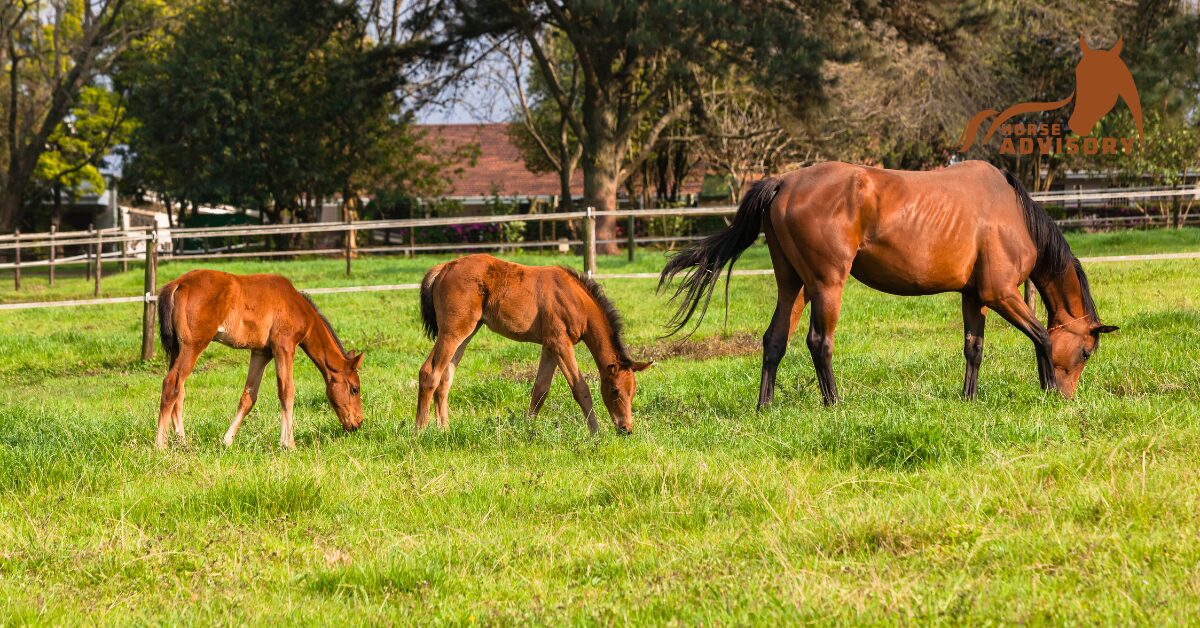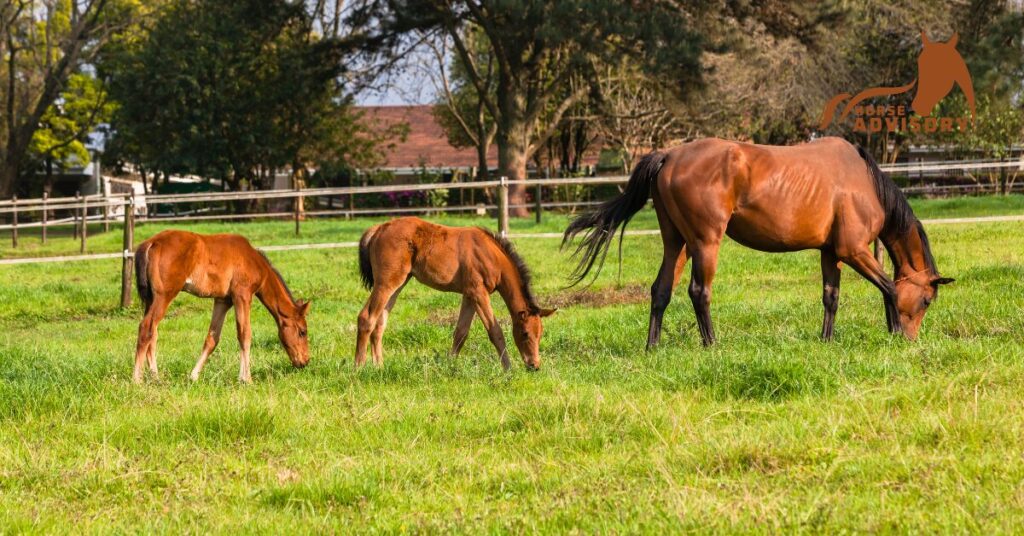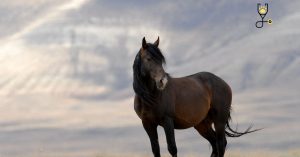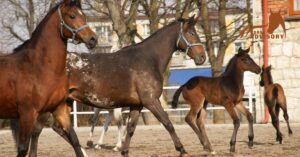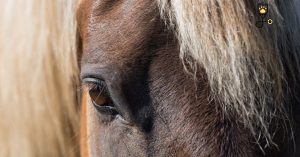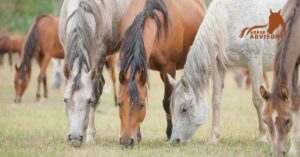Breeding Arabian horses is a revered tradition that combines art, science, and a deep appreciation for one of the most esteemed horse breeds in the world. Known for their intelligence, stamina, and striking beauty, Arabians offer unique qualities that make their breeding both a rewarding and intricate process. This blog post will guide you through the best practices for breeding Arabian horses, covering essential aspects such as selecting ideal breeding candidates, understanding genetics, and ensuring perfect health and nutrition.
Selecting the Right Mare and Stallion
The foundation of a successful breeding program lies in the careful selection of both mare and stallion. It’s crucial to choose horses that not only exhibit the desired traits but also complement each other genetically and physically.
Mare Selection
When selecting a mare, pedigree plays a pivotal role. A mare with a proven lineage often signals a higher likelihood of passing on desirable genes. But pedigree alone isn’t enough. Pay attention to the mare’s conformation—her physical structure and how it supports her intended use. A sound, well-balanced mare will likely yield healthier and more robust foals.
The mare’s health and temperament are equally critical. A mare with good health is more likely to have an uncomplicated pregnancy and delivery. Temperament, often underestimated, is crucial since it can influence the behavior and manageability of the offspring. Moreover, assessing the mare’s performance history, especially in disciplines relevant to your breeding goals, can provide insight into her potential to produce high-caliber progeny.
Stallion Selection
The selection of a stallion should mirror the rigorous criteria applied to mares. A stallion with a distinguished pedigree that showcases traits like endurance, fertility, and a winning temperament is ideal. However, the stallion’s own performance and health records are equally telling. Observing the stallion’s offspring can shed light on the hereditary traits he is likely to pass on, offering a glimpse into the potential of future generations.
Read More: Selecting the Right Arabian Stallion and Mare for Breeding
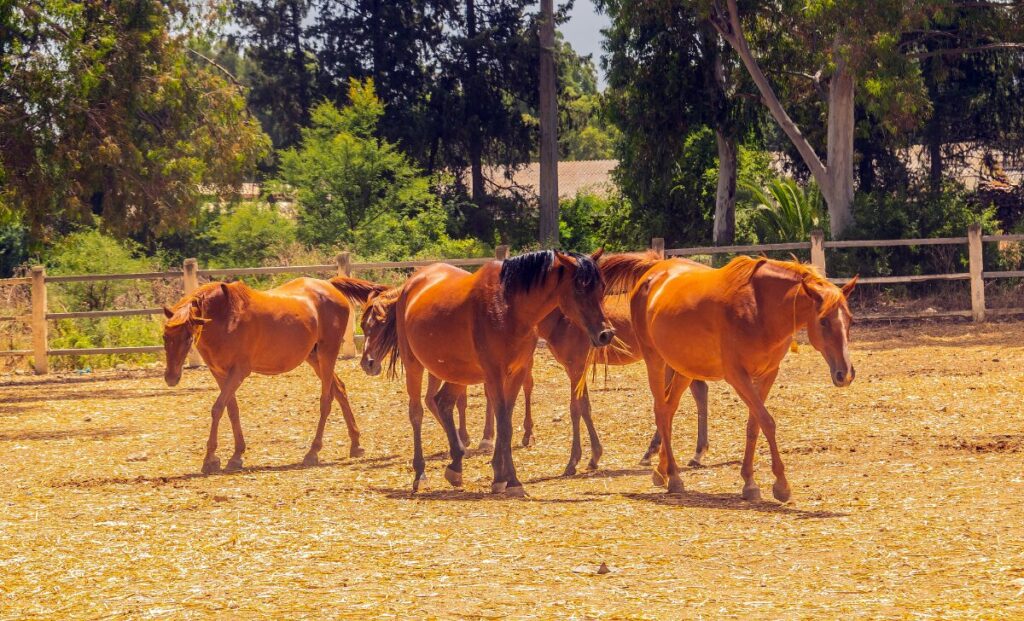
Understanding Genetic Traits
Arabian horses are known for their relatively pure genetic line, which enhances their breeding potential. When planning a breeding program, it’s important to consider:
1. Lineage and Pedigree
Thorough Research:
- Historical Pedigree Analysis: Review the full pedigree of both mare and stallion, going back several generations. This helps in understanding their genetic backgrounds and identifying any patterns of inherited traits or health issues.
- Genetic Testing: Utilize modern genetic testing to get detailed insights into the horses’ genetic makeup. Tests can reveal carrier status for certain hereditary conditions, which is crucial to avoid passing on genetic disorders.
- Inbreeding Coefficient: Calculate the inbreeding coefficient of the proposed mating. This metric helps to assess the risk of inbreeding depression, which can lead to reduced fertility, lower vitality, or health problems in offspring.
Avoiding Unintended Inbreeding:
- Outcrossing Opportunities: If the pedigree shows a high degree of relatedness, consider outcrossing with horses from different, but complementary, genetic lines. This can introduce genetic diversity and potentially enhance the overall health and performance of the offspring.
- Consulting Experts: Work with geneticists or breeding consultants who specialize in Arabian horses. Their expertise can guide you in making informed decisions about which horses to pair and why.
Identifying Genetic Disorders:
- Screening for Common Conditions: Arabian horses are known to be prone to certain genetic disorders like Severe Combined Immunodeficiency (SCID) or Lavender Foal Syndrome (LFS). Ensure that both the mare and stallion are tested for these and other breed-specific conditions.
- Health Records: Review the health records of the breeding horses and their close relatives to identify any recurring health issues that could be passed on to the offspring.
2. Desirable Traits
Endurance:
- Performance Records: Look for mares and stallions with proven performance in endurance events or other demanding disciplines. This indicates that their stamina and physical capabilities are tested and reliable.
- Training and Conditioning: Consider how well the horses have been conditioned and trained. Endurance is not solely genetic; it is also influenced by how well the horse is managed throughout its life.
Intelligence:
- Behavioral Assessments: Evaluate the intelligence of potential breeding horses through their training responsiveness and problem-solving abilities. Intelligent horses often excel in various disciplines and are easier to train.
- Pedigree of Intelligence: Consider the performance and behavioral traits of ancestors. Horses from lines known for their trainability and cognitive skills are more likely to pass on these traits.
Conformation:
- Structural Soundness: Assess the physical structure of the mare and stallion, focusing on their build, balance, and overall conformation. Well-conformed horses are less prone to injury and more likely to perform well in competition.
- Breed Standards: Ensure that the horses meet the Arabian breed standards for conformation. This includes attributes like a well-shaped head, strong legs, and a compact body. Adhering to these standards helps maintain the breed’s characteristic appearance and functionality.
Combining Traits:
- Balanced Approach: Strive to combine desirable traits in a balanced manner. For instance, while enhancing endurance, ensure that conformation and intelligence are not compromised. A holistic approach ensures that the offspring will excel in multiple areas rather than just one.
Ensuring Optimal Health and Nutrition
The health and nutrition of breeding horses directly impact the success of the breeding cycle:
- Nutrition: Nutrition plays a vital role in supporting reproductive health for both mares and stallions. A balanced diet must include all the essential nutrients needed to maintain peak health and support the demands of reproduction. For stallions, this means providing a diet that supports sperm production and overall vitality. For mares, especially those in foal, the diet must support not only their own health but also the growing needs of the developing fetus. Essential components of their diet should include high-quality forage, grains, and a mix of vitamins and minerals. Consulting with an equine nutritionist can help tailor a diet plan specific to the needs of each horse. This professional can analyze the horse’s current diet, health status, and specific needs to create a balanced feed regimen that addresses any deficiencies and supports optimal reproductive function.
- Regular Veterinary Care: Regular veterinary care is fundamental in maintaining the health of breeding horses. Routine health check-ups are essential to identify and address any potential health issues before they impact reproduction. These check-ups should include a thorough physical examination, as well as screenings for common issues such as parasites or infections. Regular vaccinations are crucial to protect horses from diseases that could compromise their health and reproductive capabilities. For breeding mares, especially during pregnancy, veterinary guidance becomes even more critical. The vet will monitor the mare’s condition throughout gestation to ensure she remains healthy and to track the development of the foal. This includes regular ultrasounds to assess the health and growth of the fetus, as well as blood tests to check for any potential complications. Dental care is another important aspect of maintaining overall health. Horses with dental issues may have difficulty eating, which can lead to nutritional deficiencies. Regular dental check-ups help prevent problems such as uneven wear, loose teeth, or infections, all of which can impact a horse’s ability to maintain proper nutrition.
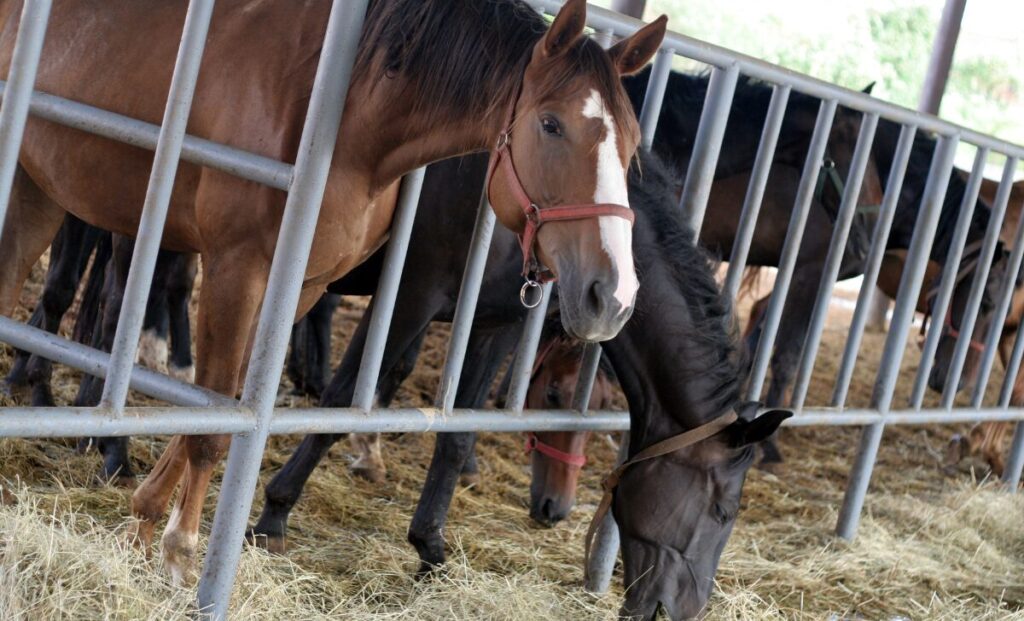
Timing in the Breeding Cycle
Timing is a crucial element in the breeding cycle of Arabian horses. Breeders often aim to align breeding activities with the mare’s natural estrus cycle, which typically occurs during spring and summer.
Estrus Monitoring:
To optimize breeding outcomes, it’s essential to have a thorough understanding of the mare’s heat cycle, also known as estrus. Mares generally come into heat every 21 days, with each cycle lasting around 5 to 7 days. The timing of estrus can vary, but it is most commonly observed during the spring and summer months due to the influence of increasing daylight, which stimulates reproductive hormones.
Monitoring the mare’s heat cycle involves observing behavioral changes that indicate she is in estrus. These signs can include increased receptiveness to stallions, frequent urination, and a raised tail. However, behavioral observation alone may not be sufficient for precise timing. Utilizing advanced techniques, such as ultrasound examinations, can provide a more accurate assessment. Ultrasound can be used to monitor the development of the mare’s ovaries and the size of follicles, which helps in pinpointing the optimal time for breeding. Additionally, hormonal assays can be employed to measure levels of estrogen and progesterone, giving further insights into the mare’s reproductive status.
Breeding Methods:
Choosing the appropriate breeding method is another crucial aspect of timing in the breeding cycle. The two primary methods are natural breeding and artificial insemination, each with its own set of considerations.
- Natural Breeding: In natural breeding, the stallion and mare are allowed to mate in person. This method allows for natural selection and may have advantages in terms of sperm viability and behavior. However, it requires careful management to ensure that both the stallion and mare are healthy and that their mating schedules are synchronized. It also necessitates direct supervision to ensure successful mating and to handle any potential issues that may arise during the process.
- Artificial Insemination (AI): AI offers greater flexibility and control over the breeding process. It allows breeders to use semen from stallions located anywhere in the world, which can enhance genetic diversity and access superior bloodlines. AI involves collecting semen from the stallion and then artificially introducing it into the mare’s reproductive tract at the optimal time. This method requires precise timing, as the semen must be deposited when the mare is in estrus. AI can also be used in conjunction with fertility-enhancing techniques such as hormone treatments or embryo transfer.
The decision between natural breeding and AI depends on various factors including logistics, health considerations, and specific breeding goals. For instance, AI may be preferred if the stallion is geographically distant, or if there are concerns about disease transmission. Conversely, natural breeding might be chosen for its simplicity and the natural behavioral dynamics involved.
Preparing for Foaling
Preparing for the arrival of a foal requires careful planning:
Foaling Environment:
Creating an optimal foaling environment is essential for both the mare and the newborn foal. The space where the mare will foal should be carefully prepared to minimize risks and ensure comfort.
- Safe and Clean Space: The foaling area should be free from any potential hazards that could harm the mare or the foal. Remove any sharp objects, equipment, or debris that might pose a risk. The area should be thoroughly cleaned and disinfected to prevent infections. A clean, dry environment is crucial for minimizing the risk of complications such as infections or injuries.
- Soft Bedding: Provide soft, comfortable bedding such as straw or shavings. This will help cushion the mare during labor and provide a clean, dry surface for the foal to lie on immediately after birth. Bedding should be abundant enough to absorb moisture and provide warmth, but not so deep that it could create a risk of entrapment or difficulty for the mare and foal.
- Quiet and Low-Stress Environment: The foaling area should be quiet and free from excessive noise or disturbances. High-stress environments can negatively impact the foaling process, so ensure the area is calm and secluded. If possible, limit the number of people around the mare during foaling to reduce stress and ensure she can focus on the labor process.
Foaling Kit:
Assembling a comprehensive foaling kit is an important step in being prepared for the birth. This kit should include essential supplies and equipment to manage various situations that may arise during foaling.
- Clean Towels: Have several clean towels on hand. These are useful for drying the foal immediately after birth, which helps stimulate breathing and prevents chilling. Towels can also be used to clean any mucous from the foal’s nose and mouth to ensure clear airways.
- Iodine Solution: Iodine or an antiseptic solution is essential for treating the umbilical cord stump after birth. Applying iodine helps to prevent infections by disinfecting the cord and reducing the risk of umbilical infections, which can be serious if not properly managed.
- Thermometer: A thermometer is important for monitoring the mare’s and foal’s temperatures. The foal’s body temperature can indicate whether it is maintaining adequate warmth or if it might be experiencing issues such as hypothermia or infection. Normal foal temperatures are typically between 99.5°F and 102.5°F (37.5°C to 39.2°C).
- Lubricants and Scissors: Have lubricants available in case the mare needs assistance with delivery. Scissors and sterilizing solution are also necessary for safely cutting the umbilical cord if needed.
- Veterinary Contact Information: Keep the contact details of your veterinarian readily available. In case of any complications or uncertainties during foaling, prompt veterinary assistance is crucial.
- Additional Supplies: Depending on the specific needs of your mare and foal, additional supplies might include a stethoscope for monitoring the foal’s heartbeat, a flashlight for checking the mare’s condition in low light, and any medications or supplements as advised by your vet.
Common Challenges and Solutions
Breeding Arabian horses can present challenges, including:
Genetic Disorders:
Arabian horses are known to be predisposed to certain genetic disorders, such as Severe Combined Immunodeficiency (SCID) and Lavender Foal Syndrome (LFS). To mitigate the risk of these disorders in offspring, it’s essential to conduct genetic screening on both the mare and stallion before breeding. This helps identify carriers of specific genetic conditions. By choosing breeding pairs with clear or non-carrier statuses, breeders can reduce the likelihood of passing these disorders to the foals. Implementing a comprehensive breeding plan that includes genetic testing helps maintain the health and vitality of the breed.
Fertility Issues:
Fertility problems can affect both mares and stallions and may arise due to various factors such as age, health conditions, or environmental stressors. Regular veterinary examinations are crucial for early detection and management of fertility issues. For mares, this may include checking for uterine infections or hormonal imbalances, while stallions might need assessments for sperm quality and reproductive health. Addressing these issues with appropriate medical treatments or management adjustments can significantly improve the chances of successful breeding.
Stress Management:
Stress can adversely impact the reproductive health and overall well-being of breeding horses. Stressors can include changes in environment, poor handling, or inadequate care. To foster a conducive breeding environment, ensure that horses have a consistent routine, access to comfortable and clean living conditions, and minimal disruptions. Providing proper nutrition, adequate exercise, and regular social interaction can also help reduce stress. Creating a stable and calm environment enhances the health of the breeding horses and supports their reproductive success.
The Role of Technology in Modern Breeding
Advancements in technology have significantly enhanced breeding practices:
Genetic Testing:
Modern genetic testing provides breeders with detailed insights into the genetic makeup of horses, which helps in making more informed breeding decisions.
- Identifying Genetic Traits: Through genetic testing, breeders can identify desirable traits and potential issues within a horse’s lineage. This includes traits such as performance potential, conformation, and temperament. Understanding these traits allows breeders to select mates that are more likely to pass on beneficial characteristics to their offspring.
- Screening for Genetic Disorders: Genetic testing is crucial for identifying carriers of hereditary disorders that can affect the health and viability of foals. Tests can reveal the presence of conditions like Severe Combined Immunodeficiency (SCID) or Lavender Foal Syndrome (LFS), enabling breeders to avoid pairings that would result in the expression of these disorders in the foals.
- Predictive Insights: Advanced genetic tools also offer predictive insights into how certain genetic combinations might affect offspring. This allows breeders to anticipate potential health issues or performance traits, helping them make strategic decisions to improve the overall quality and health of the breed.
Reproductive Technology:
Reproductive technologies have expanded the possibilities in breeding, making it easier to achieve successful outcomes and manage genetic diversity.
- Artificial Insemination (AI): AI allows for the use of semen from stallions located anywhere in the world. This not only increases the genetic pool available to breeders but also helps in overcoming geographical limitations. AI can be particularly useful for breeding mares that are difficult to manage or for accessing superior genetic lines without the need for transporting the stallion.
- Embryo Transfer: This technique involves transferring an embryo from a donor mare (which has been fertilized with the stallion’s semen) into a recipient mare. Embryo transfer enables breeders to maximize the reproductive potential of valuable mares, especially those that may not be able to carry a pregnancy to term or have other breeding constraints. It also allows for the preservation and spread of elite genetics.
- Cryopreservation: The ability to freeze and store semen (and embryos) is another significant advancement. Cryopreservation enables breeders to store genetic material from stallions and mares for future use, ensuring that valuable genetics can be preserved and utilized even after the horses have passed away or are no longer active in breeding.
- Ultrasound and Hormonal Monitoring: Advances in imaging technology such as ultrasound provide real-time information on the reproductive status of mares, including follicle development and uterine health. This allows for precise timing of AI and better management of the mare’s reproductive cycle. Hormonal assays further aid in monitoring and optimizing the breeding process.
Conclusion
Breeding Arabian horses is a meticulous process that requires dedication, knowledge, and a passion for the breed. By adhering to best practices, breeders can ensure the health and success of future generations of these magnificent horses. Whether you’re an experienced breeder or new to the field, understanding and implementing these practices can help you contribute to the legacy of the Arabian horse, ensuring its remarkable qualities continue to captivate equine enthusiasts worldwide.
